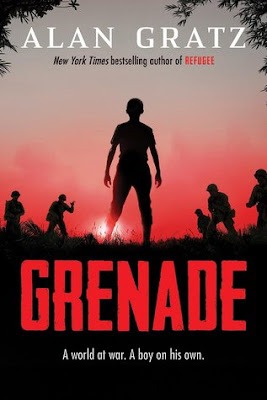Being in the Ragamuffin Parade is simple enough, too. All kids have to do is walk down Broadway on Thanksgiving morning and people will toss pennies to them. Of course, it's a scramble to get any pennies, but Rettie really needs to get as many as she can. Her father has been away at war, and her mother has been ill, luckily not with the influenza that is running rampant in Rettie's neighborhood and throughout the rest of the country as well. If her mother gets sick with influenza, Rettie, her two little sisters and baby brother would be sent to live in an orphanage. So, Rettie carefully cares for her sisters and the baby, and now, she would really like to get something special for their Thanksgiving dinner. But what if the Ragamuffin Parade gets cancelled because of the flu epidemic?
 |
| Rettie with her baby brother |
 |
| Rettie with the health service nurse |
Thanksgiving morning, dressed in her raggedy clothes, Rettie heads to Broadway for the Ragamuffin Parade, collecting enough pennies to buy apples and a pumpkin to go with their dinner of stewed cabbage. As snow falls outside, and a kitten drinks a bowl of milk, Rettie, her mother, her sisters and brother gather together for the first hopeful Thanksgiving in a long time.
 |
| Thanksgiving Day |
Rettie's family and neighborhood are richly and energetically depicted in David Gardner's wonderfully detailed, full-color water-color and pencil illustrations, capturing the expressions and emotions all the characters, and the crowded, noisy streets of lower Manhattan.
Rettie and the Ragamuffin Parade is a wonderful choice for anyone interested in American history on the local level. It is also an excellent addition to books about Thanksgiving. Be sure to read the Author's Note at the back for more information about the difficulties faced by Rettie and the rest of the country in 1918.
If you ever visit New York City, you might want to travel down to the Lower East Side and visit the Tenement Museum.
This book is recommended for readers age 7+
This book was purchased for my personal library
FYI:
It seems that most people outside of NYC have never heard of the Ragamuffin Parade on the Lower East Side, or in any of the other boroughs, and in fact, my NYC-born Kiddo never has either. I remember learning about it in 4th grade when we studied NYC history and we were taught that it was the precursor to both the Thanksgiving Day Parade that we know today, and to Halloween Trick or Treating, not something that was really popular until after WWII.
 |
| Source: Bain News Service |
"Most children brought up in Brooklyn before the First World War remember Thanksgiving Day there with a peculiar tenderness. It was the day children went around "ragamuffin" or "slamming gates," wearing costumes topped off by a penny mask."
You can find out more about the Ragamuffin Parade tradition HERE






